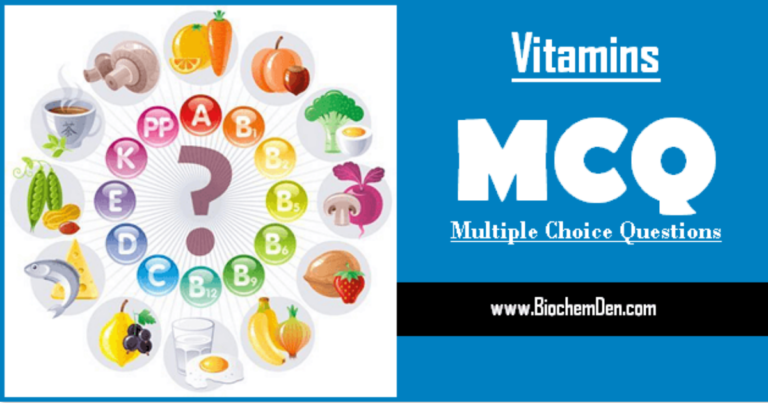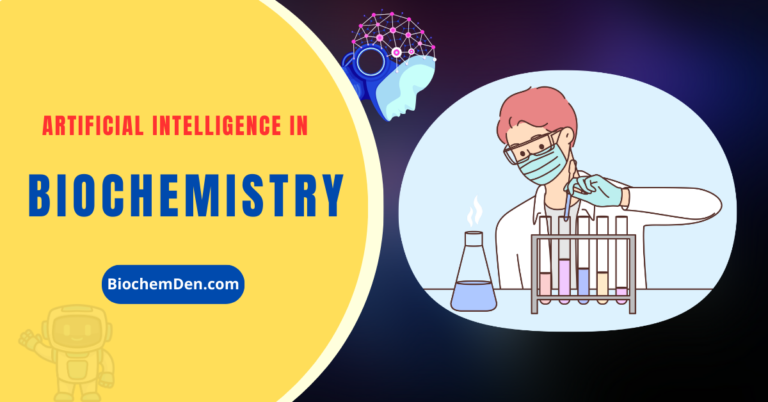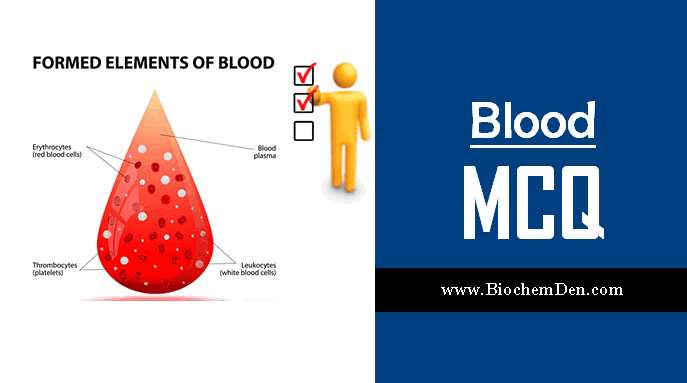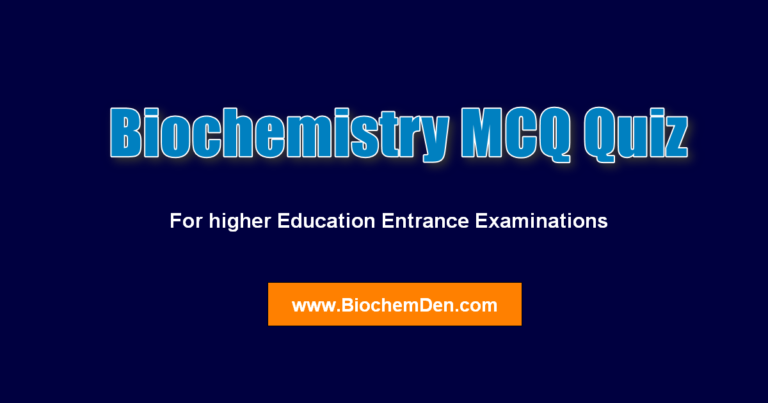The Biochemistry MCQ (Multiple Choice Questions) contains 20 to 25 question. Both questions and answers arranged randomly.
1. Degradative reactions
A. All of the choices are true.
B includes the buildup of products such as complex proteins and nucleic acids
C cause death.
D tend to be endergonic
E can drive anabolism.
2. The critical factor driving yeasts to use fermentation to metabolize sugar is
A. that yeasts can secure 38 ATP molecules from fermentation.
B inability to carry on glycolysis.
C lack of oxygen.
D that yeast is intolerant to alcohol.
E lack of any enzymes.
3. The amino acids we cannot synthesize are called _____ because we ____ _.
A. An anabolic must use alternative amino acids
B essential must include them in our diet.
C unnecessary, therefore d limiting, must include them in our diet not need them
D superfluous must survive without them.
4. Which of these pairs of processes is anaerobic?
A the citric acid cycle and the electron transport system
B fermentation and the citric acid cycle
C glycolysis and the citric acid cycle
D fermentation and glycolysis
E glycolysis and the electron transport system
5. Which process must occur before fermentation?
A fermentation
B the electron transport system
C the preparatory reaction
D the citric acid cycle
E glycolysis
6. Which of the following molecules can be broken down into acetyl and enter the citric acid cycle?
A. amino acids
B all of the choices are correct
C fatty acids
D proteins
E pyruvate
7. For fatty acids to be able to enter the pathways of cellular respiration, they must be
A. deaminated.
B be converted into five-carbon sugars
C combined with glycerol.
D broken into acetyl groups
E combined with ATP.
8. The first reaction in the citric acid cycle is binding
A. carbon dioxide to a five-carbon (C5) molecule.
B carbon dioxide to a four-carbon (C4) molecule.
C acetyl-CoA to citric acid
D acetyl-CoA to a C5 molecule.
E acetyl-CoA to a C4 molecule
9. Why would an organism utilize fermentation if it was wasteful of the energy in food molecules and posed the threat of killing itself with high levels of toxic alcohol?
A Fermentation can provide a rapid burst of ATP since it does not have to go through the full breakdown cycle.
B if glucose levels are not high, there may be time to disperse the alcohol “waste.”
C All of the choices are advantages
D The organism can survive short spells of anaerobic conditions and maintain growth and reproduction.
E None of the choices is an advantage; anaerobes only survive where aerobes cannot.
10. Complete oxidative breakdown of glucose results in ______ ATP molecules.
A 4
B 36
C 39
D 2
E 32
11. Which of these processes occurs in the cytosol?
A chemiosmosis
B the preparation of pyruvate
C glycolysis
D the citric acid cycle
E the electron transport system
12. Adult humans cannot synthesize _____ out of _____ amino acids.
A half, all
B nine, twenty
C eleven, twenty
D nine, eleven
E any, twenty
13. The process based on the Greek root words for “sugar” and “splitting” is
A. glycolysis.
B metabolism
C chemiosmosis.
D phosphorylation.
E fermentation.
14. Which process produces both NADH and FADH2?
A fermentation
B glycolysis
C the electron transport system
D the citric acid cycle
E the preparatory reaction
15. About _____ of the energy in the glucose molecule is captured in ATP through the reactions of cellular respiration.
A 57%
B 12%
C 84%
D 26%
E 39%
16. Some bacteria are strict aerobes and others are strict anaerobes. Some bacteria, however, are facultative anaerobes and can live with or without oxygen. If given the choice of using oxygen or not, which should a facultative anaerobe perform?
A. None of these is correct.
B It doesn’t matter; both processes will produce the same results.
C Use oxygen since aerobic metabolism provides more ATP per molecule of carbohydrate broken down than anaerobic metabolism.
D Use oxygen because aerobic metabolism is easier.
E Not use oxygen since it is a facultative anaerobe, it doesn’t tolerate oxygen well.
17. The preparatory reaction breaks
A. pyruvates into glucose.
B pyruvates into acetyl-CoA and carbon dioxide.
C pyruvates into acetyl-CoA and water.
D acetyl CoA into pyruvates and carbon dioxide.
E glucose into pyruvates
18. Cellular respiration yields about ____ of the energy of glucose in ATP molecules.
A 28%
B 39%
C 2%
D 50%
E 15%
19. The first process in breaking down glucose is
A fermentation.
B the preparatory reaction.
C the citric acid cycle.
D glycolysis.
E the electron transport system.
20. The energy stored in 36 ATP molecules produced by aerobic respiration is 39 percent of the energy available in six-carbon glucose and the other 61% of the glucose bond energy is lost. The respiration of an 18-carbon fatty acid produces 216 ATP. We can expect that
A. None of these statements is true.
B this respiration pathway must occur in some cell organelle besides the mitochondrion.
C the degradation of fatty acid is totally unrelated to the citric acid cycle.
D because the molecules are so large, fats are an inefficient form of stored energy.
E Six times as much energy was stored in this molecule but also a similar proportion is lost.
- Carbohydrates Classifications
- Basics and Amino acids Classification Download Ebook
- What are Lipids? What is the Importance in Human Body
- VITAMINS: The Micro-nutrients in Our Body
- Carbohydrate Metabolism: Glycogenesis
- Biochemistry Question Bank for Second B.Sc. Students
- MCQ in Carbohydrates
- Carbohydrates MCQ Online Examination- Part 2
Discover more from Biochemistry Den
Subscribe to get the latest posts sent to your email.




